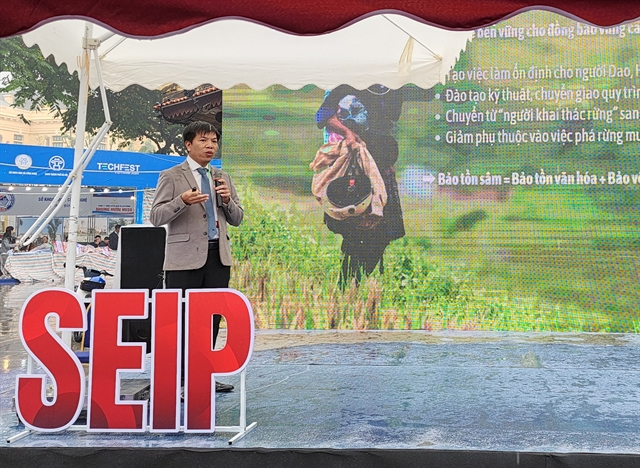 Opinion
Opinion

Over 2,000 children die by drowning every year in Việt Nam, according to the Ministry of Labour, War Invalids, and Social Affairs.
Since 2017, under the financial support of Bloomberg Philanthropies, the Global Health Advocacy Incubator (GHAI), a programme of Campaign for Tobacco-Free Kids, partnered with the Ministry of Labour, War Invalids, and Social Affairs and 15 provinces and cities to launch the proven effective interventions of survival swim and water safety education for children aged 6-15.
Việt Nam News reporter Lê Hương spoke with Đoàn Thu Huyền, Việt Nam Country Director of Campaign for Tobacco-Free Kids, about the programme’s highlights.
 |
| HEALTH OFFICIAL: Đoàn Thu Huyền, Việt Nam Country Director of Campaign for Tobacco-Free Kids. Photo courtesy of the organisation |
Could you highlight the progress of this programme in Việt Nam?
Việt Nam has been one of the most successful countries in child preventing child drowning over the past five years. The programme has been implemented in over 130 communes across 15 provinces, increasing awareness about child drowning prevention and teaching children aged 6 to 15 survival swimming skills.
We’ve trained more than 1,000 teachers in safe swimming instruction. Despite challenges posed by the COVID-19 pandemic, around 32,000 children have learned to swim, and 52,000 have been taught water safety skills.
The percentage of children who can swim has more than doubled, rising to 32.6 per cent from 14.7 per cent. Additionally, in the areas where we’ve implemented the programme, the number of child drowning incidents has decreased.
What advantages and challenges have you encountered in carrying out this programme in Việt Nam?
We’ve acknowledged sincere thanks for the strong support and pro-active engagement from relevant ministries and local authorities, particularly from the Ministry of Labour, Invalids and Social Affairs and the Ministry of Education and Training. They’ve actively engaged in the programme planning and interventions at local levels, especially before the peak seasons for child drowning, such as summer and flood periods.
Public awareness has also increased significantly, with parents now actively seeking out information to protect their children. Social media has played a vital role in disseminating information in engaging formats, while in remote, underserved areas, healthcare workers visit homes and use public address systems to spread key messages.
However, in rural areas where children are often cared for by their grandparents or other elders, we need to provide even more support. These children are particularly vulnerable and should be prioritised for swimming lessons and safety training.
 |
| SAFETY FIRST: Children should learn survival swim and water safety skills. Photo courtesy of Campaign for Tobacco-Free Kids |
Some experts argue that teaching survival skills in water should take precedence over swimming for sport. What’s your view?
It’s important to see drowning prevention as a comprehensive issue. Drowning can happen to anyone, at any time, so we need a multi-faceted approach.
Survival swim is one of the most effective ways to prevent drowning. The WHO defines "survival swim" as the ability to swim at least 25 metres and float for at least 30 seconds.
For primary school children, it’s crucial to teach them not just how to swim, but also how to assess risks and perform basic self-rescue. For children under five, however, we don’t recommend swimming lessons. Instead, parents and caregivers should supervise them closely and keep them away from open water.
With the recent floods caused by Typhoon Yagi, do you think teaching survival swimming skills has become even more urgent? Have there been any proposals from the Vietnamese authorities to train children in these skills?
The UN’s Resolution on drowning prevention encourages countries to incorporate drowning prevention into their natural disaster action plans. There’s a clear connection between child drowning and climate change, as floods and other disasters increase the risk for children who play near open water.
Việt Nam has made significant progress in reducing child drowning, but we must have more joint efforts for long-term sustainability and impact to reduce the ratio of drowning deaths. In the coming year, I hope to see more investments in teaching water safety skills, especially in schools, with a focus on primary school students. Incorporating these lessons into both the main curriculum and extracurricular activities would be ideal.
If possible, communities should also host swimming classes for children, but it’s critical that these are conducted in safe conditions. This includes having qualified teachers who are knowledgeable about child safety.
Parents and caregivers must also be proactive in ensuring their children’s safety, whether that’s through reminders or careful supervision. Sometimes, a simple reminder or close watch can prevent a tragedy. VNS




